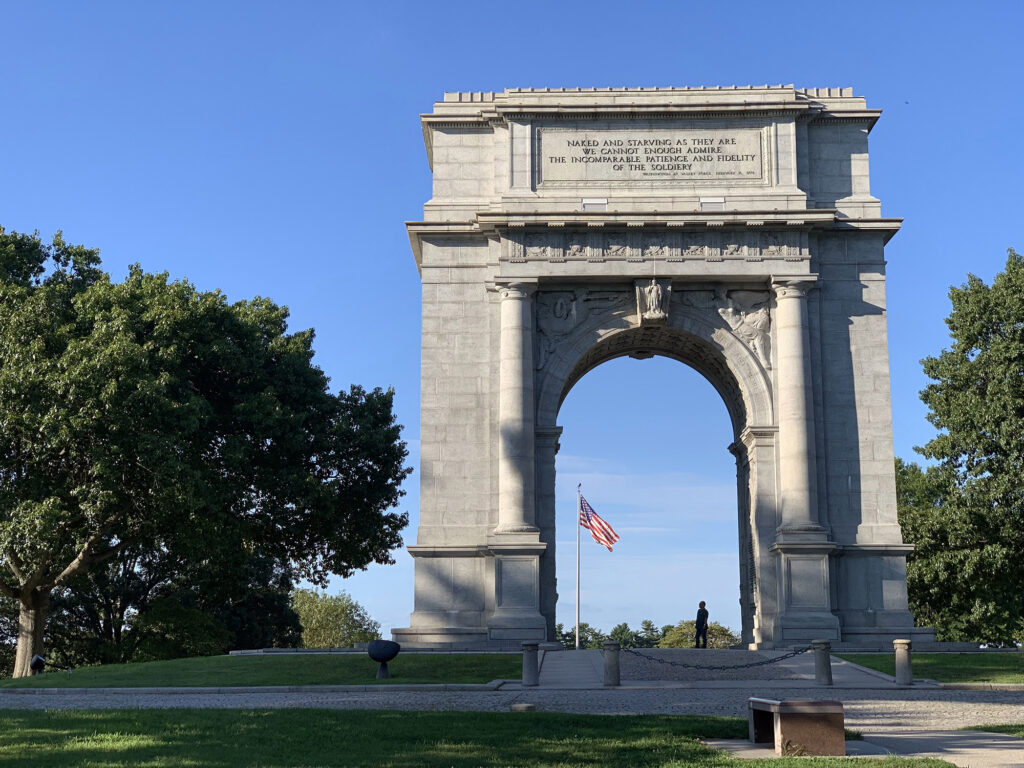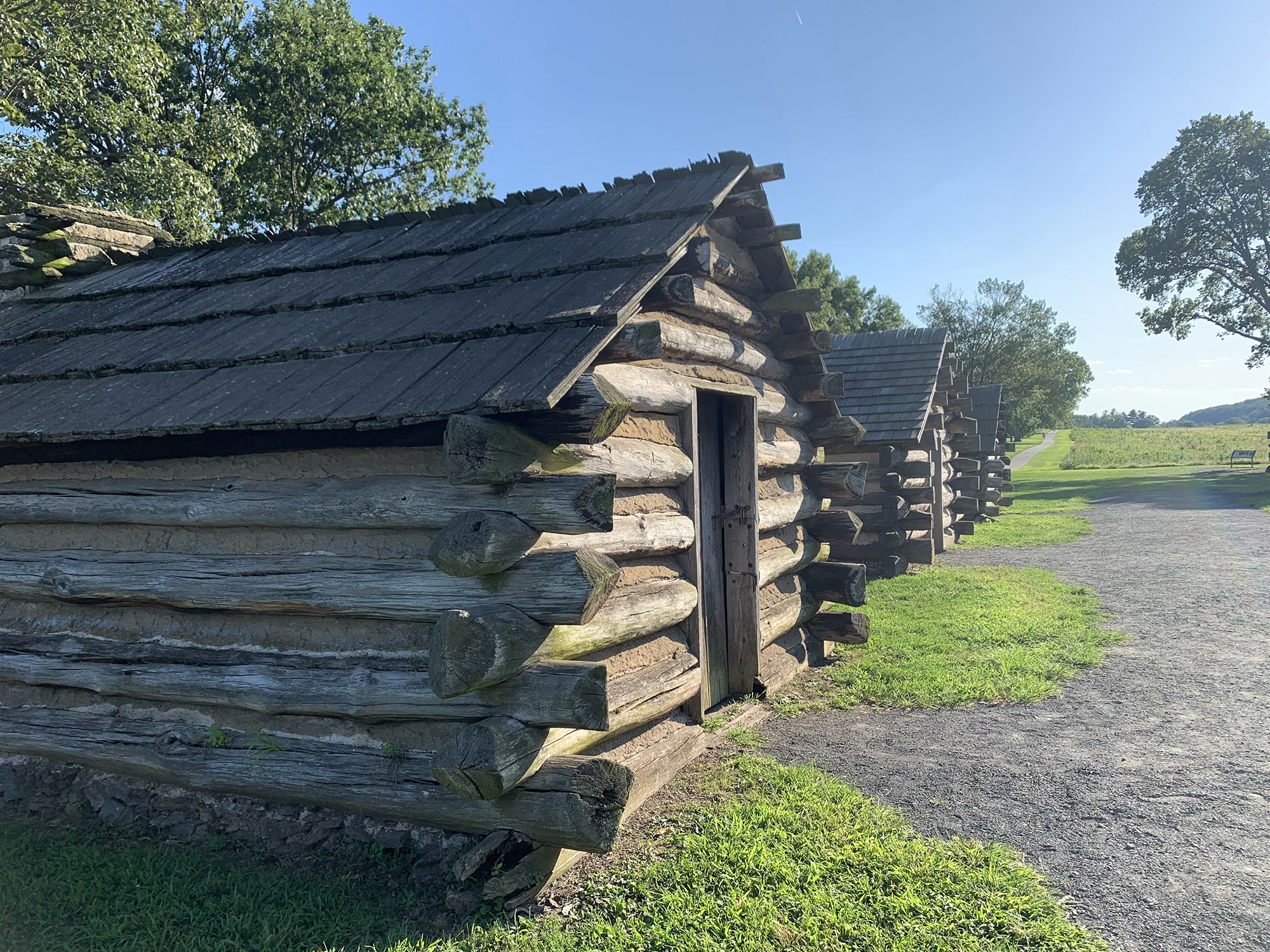
Date of Visit: October 25, 2019
Valley Forge is a special place.
Among the most important sites in United States history, Valley Forge is the place where George Washington turned a loose band of militiamen into the Continental Army that would eventually defeat the British.
It’s also a place where I spent many a lunch break during my time working in King of Prussia.
This is hallowed ground. Between hunger and disease, many good men never made it out of Valley Forge to rejoin the fighting. Those that did risked everything in the fight for freedom.
But it was Washington, himself, who said it best. “Naked and starving as they are, we cannot enough admire the incomparable patience and fidelity of the soldiery.”

That quote is forever memorialized on the National Memorial Arch, the signature centerpiece of what is now Valley Forge National Historical Park.
Modeled after Roman victory arches (like the more famous Arch de Triumph in Paris), Valley Forge’s arch celebrates and memorializes those who served. Carved on one side is a list of officers who served under Washington – men like Lafayette, Greene, and von Steuben.

The latter has his own memorial within the confines of the park. Baron von Steuben is credited with bringing discipline to the army through training drills that were perfected throughout the winter of 1777-78 while the army was camped.
A statue of von Steuben stands watch over what was once the parade grounds, the place where he would have inspected the troops.
Both the Arch and the von Steuben statue can be found along the five-mile Joseph Plumb Martin Trail that loops around some of the most important historically significant parts of the park.
The trail starts where any visit to the park should – at the Visitor Center (which has completed a renovation since our visit). Here you’ll find a small museum with artifacts from the encampment and other displays that help tell the story of that fateful winter.
At the Visitors Center, guests can also visit the Encampment Store to purchase memorabilia to take home or to book a Trolley Tour (additional fees apply). Ranger-led walks are also offered during the summer months.
Next door to the Visitors Center is the theater where guests can view a short film that provides more context about what visitors will see throughout the park.

Leaving the Visitors Center, either by way of the trail or doing the driving tour along Outer Line Drive, the Muhlenberg Brigade Huts quickly come into view. These huts are reconstructed based on historic evidence and depict a typical soldier’s quarters during the encampment. They seem big enough from the outside, but you gain a whole new perspective once you see how many bunks (8-12) are packed into each one of these tiny long cabins.
It’s no wonder that disease spread so easily through the camp as men lived on top of each other with a lack of potable water and mild winter that left the ground muddy and at times, impossible for supply wagons to traverse.

The Joseph Plumb Martin Trail is named for one of those soldiers who spent the winter in one these huts. Decades after the war, he wrote down his experiences in a memoir, describing in great detail the struggles of the fledgling army. His story is one of the primary resources that helps the park to interpret the history to this day.
Leaving the trail, guests can visit arguable the most important remaining historic building on the property – Washington’s Headquarters.
This is the building where the Commander-in-Chief made his command center during the encampment. Nearly all of the house’s interior is original wood. Here, visitors are literally walking in Washington’s footsteps. Grasping the original handrail that leads to the second floor, you are practically holding hands with history.
Outside the HQ is a more recent, yet still historic landmark – the Valley Forge Train Station. During the days of steam engines, Valley Forge was a regular stop along the main line. Freight trains still carry goods along the tracks that were added a century after the encampment – before there was any notion of creating a National Park.
The Train Station serves today as a small museum, an adjunct to Washington’s Headquarters with displays that speak to the leadership of our Nation’s first leader.
There is much more to explore within the park beyond the history, too. Throughout the sprawling acreage is a system of more than 20 miles of trails, including a swath of the Schuylkill River Trail connecting Phoenixville to Philadelphia and a network of hiking trails on Mount Joy and Mount Misery.
A short hike on these trails leads to more quiet contemplation – away from the crowds that gather around the main historic sites. And the trails have wonders of their own to discover, including the ruins of a bottling plant that was built in the side of the mountain and operated until the early 20th Century.
Driving around this side of the park, you’ll also encounter a covered bridge that has been preserved to continue carrying cars across the meandering Perkiomen Creek which connects to the Schuylkill River in the park.
People go to the park for many reasons – to discover the past, to honor America’s story, to escape the urban sprawl that surrounds this sacred space.
No matter your reason, Valley Forge is a must-visit.

When You Go
- There is no admission fee to Valley Forge Park, and ranger-led programs are free of charge. There is a cost for trolley tours led by the Encampment Store.
- The five-mile Joseph Plumb Martin Trail is a full loop that connects the Visitors Center, Muhlenberg Brigade Huts, National Memorial Arch, Artillery Park, the Von Steuben statue, and Washington Memorial Chapel. Washington’s Headquarters, Mount Joy and Mount Misery are connected by other trails but require and out-and-back.
- The park-owned roads are open from dawn to dusk though there are public roads that travel through the park at all times.
- The main entrance to the park is located along Route 23 just outside King of Prussia and is easily accesible from Routes 422, 202 and I-76 (the Pennsylvania Turnpike).








